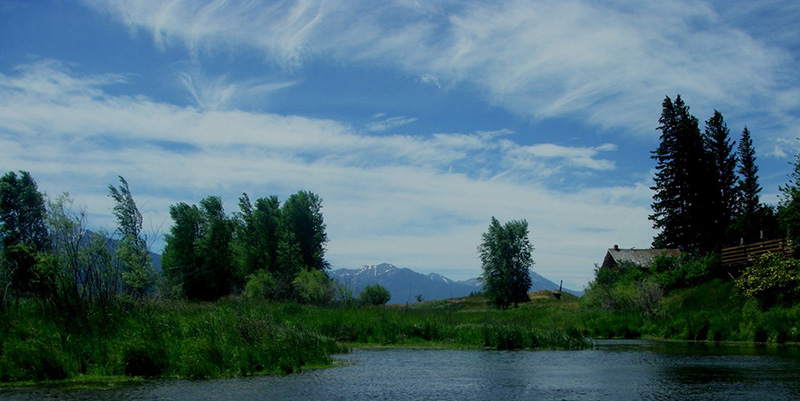

"It is the constant, or inconstant, change, the infinite variety in fly-fishing that binds us fast.
It is impossible to grow weary of a sport that is never the same on any two days of the year."
Theodore Gordon [1914]

"Montana's Armstrong Spring Creek" - Image by Neil Travis
![]() For consumers who are interested in fly fishing from a kayak, the first step it to invest in a high-quality, well-known brand. If you have been in the market for some time, you will probably understand the difficulties of choosing just one from the many available models.
For consumers who are interested in fly fishing from a kayak, the first step it to invest in a high-quality, well-known brand. If you have been in the market for some time, you will probably understand the difficulties of choosing just one from the many available models.
 Standing on the bank of a local park pond, I was grinning ear-to-ear while staring at a palm-sized Crappie while seemingly in a world all my own. I was drawing attention. A couple families pulled their young children to the opposite side as they walked past, and my attention was broken for a short minute as a small punt-able-sized dog growled at me while passing
Standing on the bank of a local park pond, I was grinning ear-to-ear while staring at a palm-sized Crappie while seemingly in a world all my own. I was drawing attention. A couple families pulled their young children to the opposite side as they walked past, and my attention was broken for a short minute as a small punt-able-sized dog growled at me while passing
 It was a nice day, no rain but we had showers the previous three days so it was still to wet to try to drive in. In the low places the truck would probably disappear. I grabbed the fish basket, a 3 weight, a 5 weight and boxes of flies and headed off.
It was a nice day, no rain but we had showers the previous three days so it was still to wet to try to drive in. In the low places the truck would probably disappear. I grabbed the fish basket, a 3 weight, a 5 weight and boxes of flies and headed off.
 Over the last few years I've been contributing articles to Fly Anglers Online on fishing information and techniques for spring creeks and Yellowstone National Park, unique fly patterns, and Atlantic salmon fly book reviews. This time I'd like to share my thoughts regarding one of our pieces of equipment; yet not regarding the major ones such as rods, reels, or lines, but perhaps one of the most unconsidered items, the leader.
Over the last few years I've been contributing articles to Fly Anglers Online on fishing information and techniques for spring creeks and Yellowstone National Park, unique fly patterns, and Atlantic salmon fly book reviews. This time I'd like to share my thoughts regarding one of our pieces of equipment; yet not regarding the major ones such as rods, reels, or lines, but perhaps one of the most unconsidered items, the leader.
 As I write this article many of the rivers in the Rocky Mountain States are at or above flood stage as a result of our generous snow pack from the preceding winter and a generally cool and wet spring. High water is predicted to continue well into the early summer months on many streams and this reality makes it necessary for the angler to approach all water bodies, especially flowing water, with extreme caution. High water is not only a danger to wading anglers but also to anglers in floating watercraft.
As I write this article many of the rivers in the Rocky Mountain States are at or above flood stage as a result of our generous snow pack from the preceding winter and a generally cool and wet spring. High water is predicted to continue well into the early summer months on many streams and this reality makes it necessary for the angler to approach all water bodies, especially flowing water, with extreme caution. High water is not only a danger to wading anglers but also to anglers in floating watercraft.
![]() Some reviewers have not been kind in the past to this volume, claiming it was written by man who had become too full of himself or that his attacks on the Halford School of the Upstream Dry Fly was uncalled for; but I think that those reviews were written by either uninformed reviewers or ones who had some sort of agenda to follow. As for me I felt that this book offers a rare insight into the growth of the art of nymphing.
Some reviewers have not been kind in the past to this volume, claiming it was written by man who had become too full of himself or that his attacks on the Halford School of the Upstream Dry Fly was uncalled for; but I think that those reviews were written by either uninformed reviewers or ones who had some sort of agenda to follow. As for me I felt that this book offers a rare insight into the growth of the art of nymphing.
[ HOME ]
[ Search ] [ Contact FAOL ] [ Media Kit ]